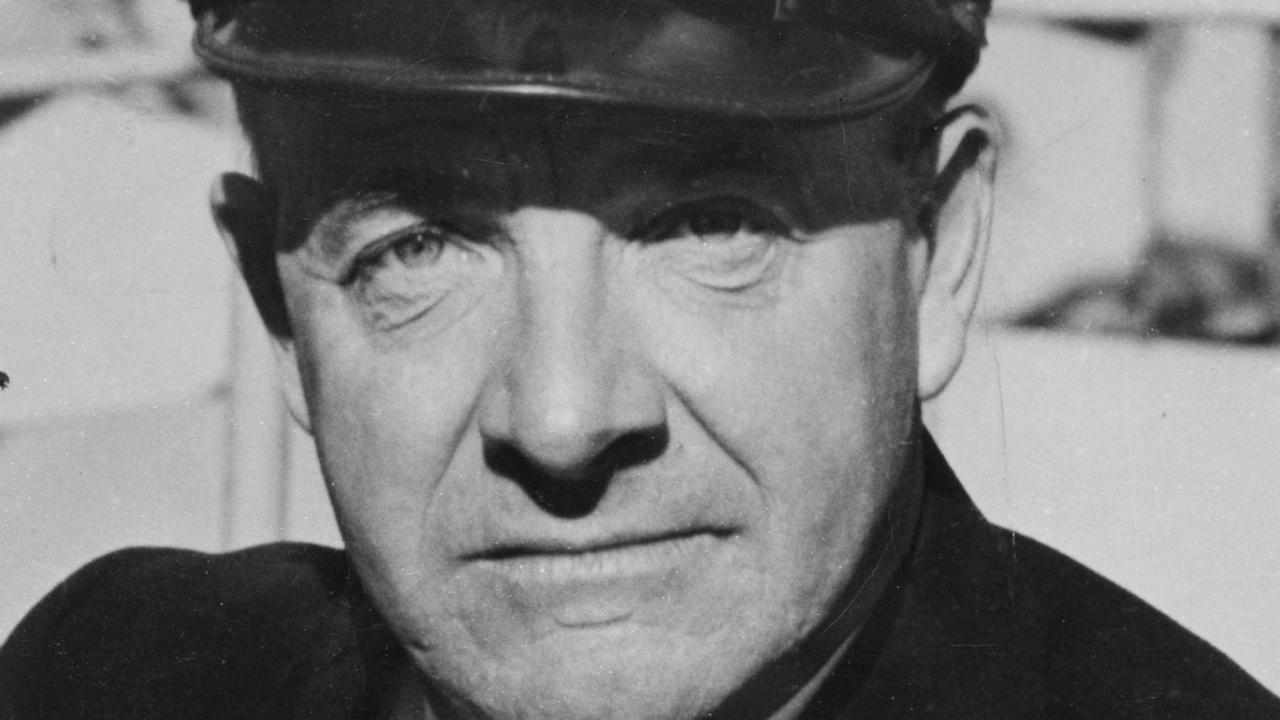Swimming coach Forbes Carlile made a science out of the sport, with great success
OBITUARY: Forbes Carlile, who died this week, was not above pushing his own body to its limits to see what he could ask others to do.

Today in History
Don't miss out on the headlines from Today in History. Followed categories will be added to My News.
THE marathon is a gruelling race, but in the field of the NSW marathon in 1950 there was one man who was not necessarily in it to win it. He was after something else. The 29-year-old University of Sydney physiology lecturer Forbes Carlile wanted to see what happened to the human body under extreme stress.
Despite never having run the distance he came a respectable 10th, but collapsed in the dressing rooms afterwards. His trainer and mentor Professor Frank Cotton, also from Sydney University, told the press: “He drove himself too hard.”
Carlile, who died this week, made a lifelong study of pushing the body too hard. He and Cotton set up Australia’s first Sports Science Laboratory at Sydney University’s old medical school in 1946. The expertise Carlile gained led him to a job training Australian swimmers for the 1948 Olympics and later competing as a pentathlete at the 1952 Helsinki Games.

In 1955 he turned fulltime to coaching swimmers, the role for which he become famous. But his fascination for, and love of, swimming had its roots in his childhood.
He was born in Armadale in Victoria in 1921 but at age two the family moved to Sydney. Carlile was initially a reluctant swimming student but eventually became obsessed with the water.
“I swam my first race at the Mosman Swimming Club when I was nine years old. The year was 1931 and it was the 50m event in a carnival,” he wrote for The Daily Telegraph’s Remember When column in 2012.
“The pool was at Clifton Gardens in Chowder Bay, a unique circular wooden structure with two deck levels. It was built by the Sydney Ferry Company in the first decade of the 20th century as an adjunct to its recreation grounds. It became a place where the bakers, butchers and all other manner of workers had their picnic days. Living nearby, we small boys, uninvited, used to join in — lining up for the handouts and the free chair-o-plane rides on offer.

“In the pool’s heyday there was a 60ft (18m) high diving tower, Sydney’s highest at the time. Climbing up the outside ladder was a great adventure, especially when we had to navigate a situation where one of the rungs was missing.
“It was not only a popular place to swim but also a place for people who liked to watch diving shows. The pool was like an open-air amphitheatre that could seat about 3000 people and in the early 1930s at the height of the Great Depression, Dukey Tye and Charlie Harnetty would lead a troupe of out-of-work young men who thrilled us with fearless dives off the high tower.

“Like so many wooden pool structures in Sydney Harbour, such as at The Domain, Rose Bay, Abbotsford, The Spit and many others, the unique structure at Clifton Gardens eventually disappeared. The high tower was cut down to half its former height for safety reasons. The creaking, rotting wooden structures were too expensive to maintain and inevitably the two-level bath structure came down as well.
“You can still see pictures of the pool on the internet, giving an idea of what it looked like before it was demolished, including one showing local identity Jack Allport taking the plunge.”

Although Mosman pool was a great training ground for Carlile as a swimmer, his marks began to suffer at school. His parents then sent him to Scots College where his academic performance improved. He also became captain of the swimming team.
Teachers at Scots instilled a love of science and at Sydney University, under the mentorship of Cotton, a former swimmer, Carlile was able to study how the human body performed under the duress of sport. Meanwhile, he continued swimming, becoming NSW backstroke champion in 1942.
He began to apply the principles of sports science to teaching others to swim, bringing Australia two silver and two bronze medals in London in 1948. His own tilt at Olympic glory as a pentathlete didn’t win him a medal in 1952 but he came 25th in a field of 50.
When he turned to fulltime professional coaching, training the Australian swimming team for the 1956 Melbourne Games it helped to foster a culture of scientific sports coaching that would make Australia’s swimming team world renowned.
Originally published as Swimming coach Forbes Carlile made a science out of the sport, with great success


